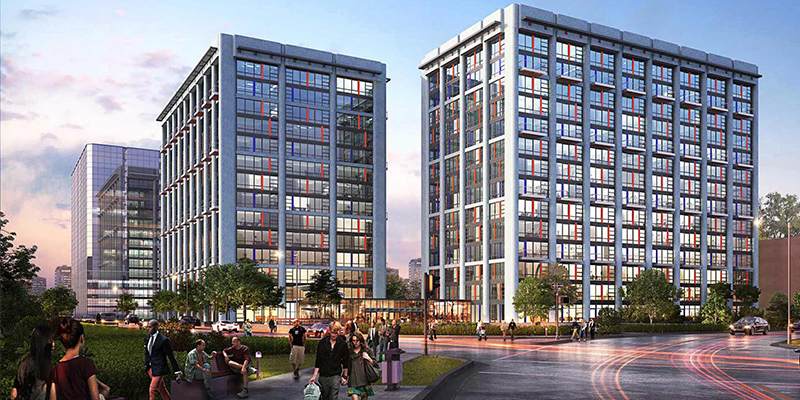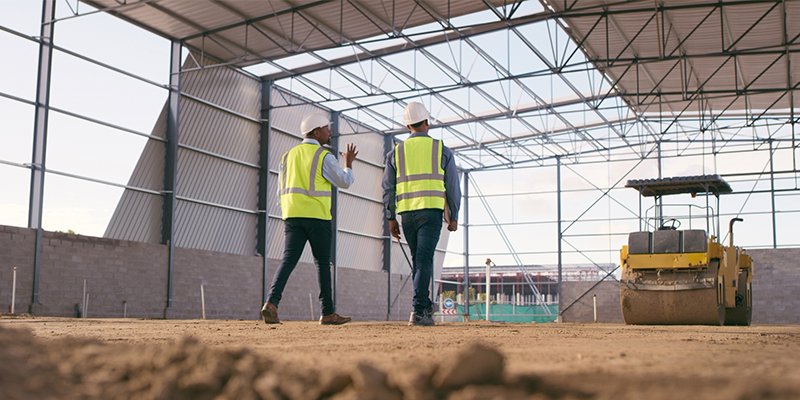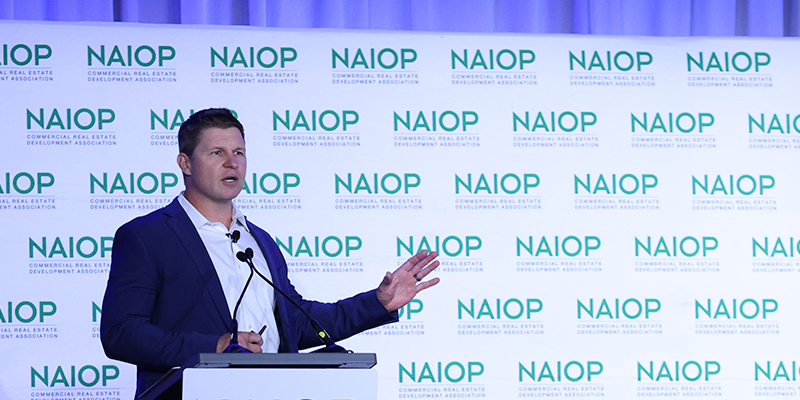Adaptive reuse projects can often be a high-risk, high-reward proposition, as aging or obsolete assets bring their own set of unique challenges for developers hoping to revitalize or reposition a property for new uses.
But as availability of land continues to shrink in densely populated areas, and big-box retail stores stand empty, developers are taking another look and evaluating the untapped potential of repositioning these sites.
Below, some examples of unique adaptive reuse projects across the U.S.
From Sears to Top-secret Tech Hub
“Sears, the once-ubiquitous department store that has been battered by the growth of e-commerce, may have one last thing of value to market: its own buildings,” said The New York Times recently.
While some of the 129-year-old retailer’s buildings are being repurposed for other forms of retail or high-end apartments, perhaps to most unique second act for a store location is as a lab where classified weapons systems are conceived.
In Lawton, Oklahoma, near the Fort Sill Army base, the FISTA Innovation Park has taken over a former Sears space in the city-owned Central Plaza Mall. The cavernous department-store-sized rooms will be divided up into smaller, secure ones, where defense contractors can “toil away on top-secret technology.” At lunch, these high-clearance workers can meander to the mall’s food court and hopefully shop.
“We’ve created a collaborative ecosystem,” said James Taylor, director of the FISTA Innovation Park project. “And anyway, no one else was standing in line to occupy these stores.”
A Big-risk Brownfield-to-Warehouse Conversion
The 103-acre ePort Logistics Center in Perth Amboy, New Jersey, was originally the home of American Smelting and Refining’s copper smelting facility, which closed in the late 1970s. The long-neglected site was contaminated by byproducts of the smelting process and other volatile pollutants.
Developer Bridge Industrial transformed the site, once considered environmentally unsalvageable. They identified 52 areas of concern at the start of the project. One of the most acute issues was site’s “poor geotechnical and soil conditions related to its proximity to the Arthur Kill waterway,” according to Development magazine. The site was considered unsuitable to support development without extensive soil stabilization, so Bridge applied three soil-engineering techniques which took several months to complete and represented about 20-25% of the project’s total hard costs.
Today, that site is home to an advanced logistics center that serves the concentrated consumer base in and around New York City, supporting hundreds of permanent jobs. Before construction was even completed, Bridge executed a long-term agreement with Target for the biggest building at the site. It was one of the largest industrial leases signed in New Jersey in 2017, according to Development magazine.
An ‘80s Office Gets New Life as Luxe Apartments
While mid-20th-century office towers in downtown districts have been popular for redevelopment because of their sought-after locations and compact dimensions, there are many aging office buildings that are newer, bigger and further from a city center.
The Park + Ford apartments in Alexandria, Virginia, are an example of a successful overhaul of a struggling office complex from the 1980s, in an area where the office market was already softening at the time.
A major challenge of the project – apart from the millions spent on fixing damaged concrete, mold, and asbestos – was fitting apartments into a building not meant to serve as a residential property. Interior access to natural light, the drab exterior, lack of operable windows, and zoning regulations all had to be addressed.
Lowe and partner USAA Real Estate, who acquired the two office towers, also added numerous amenities on the first floor: “A pet spa, gym and yoga room, a package room with refrigerated storage, a multisport simulator for games such as baseball and golf, a private dining room and co-working office space,” according to the Wall Street Journal.
The project came to market at the perfect time – asking rents in the area have risen by double-digits over the past year.
Adaptive reuse projects bring new life to areas that may have been long-neglected, vacant or downright dangerous. And while they each present considerable challenges, there are many factors that are helping encourage developers to take them on.
More state grants and federal tax credits have been created to encourage redevelopment in local communities, and advancements in technology and science for remediation make more dollars and sense for developers who might jump into an adaptive reuse venture.
NAIOP will soon launch a new, interactive on-demand course on the topic. “Fundamentals of Adaptive Reuse” will be released through the NAIOP Center for Education in early 2022.
Interested in learning more about adaptive reuse projects? Read the NAIOP Research Foundation’s recent reports, “Repurposing Retail Centers: Profiles in Adaptation, Repositioning and Redevelopment,” and “Profiles in the Evolution of Suburban Office Parks.”
Photo courtesy Park + Ford apartments.








